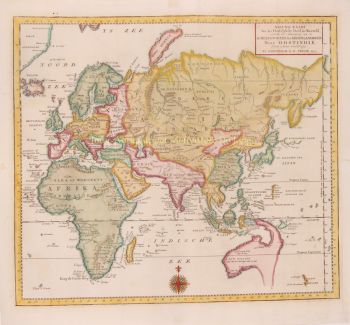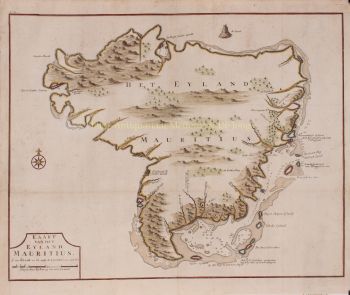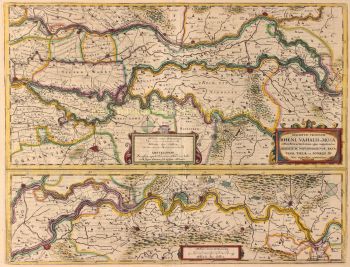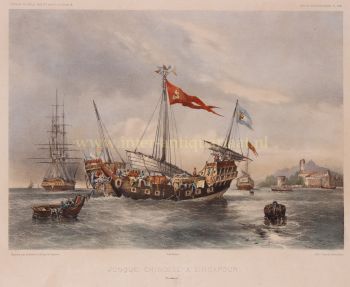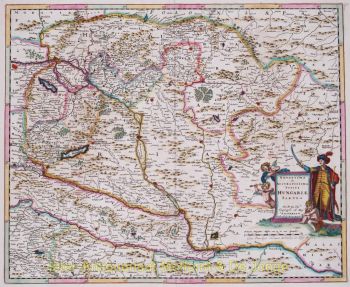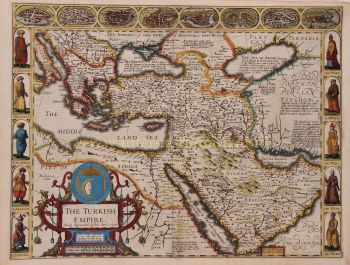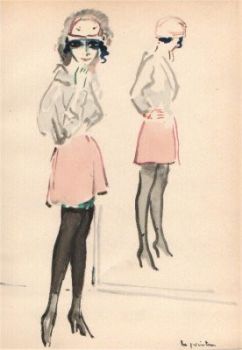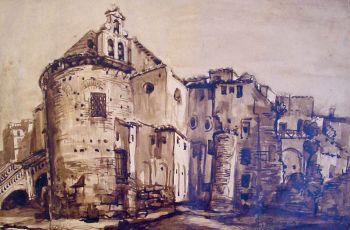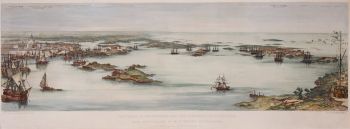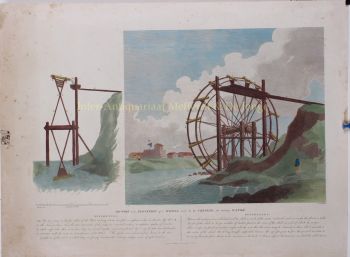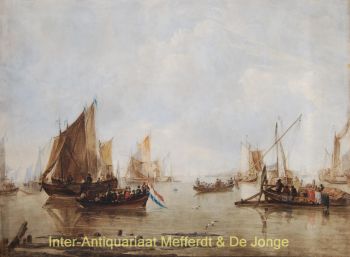World map 1700
Romeijn de Hooghe
Inter-Antiquariaat Mefferdt & De Jonge
- About the artworkNovissima & exactissima totius orbis Terrarum Tabula Hand coloured copper engraving from the "Atlas Maritimus Ofte Zee Atlas"?. Published in Nuremberg by David Funcke c. 1700. Size: 48 x 55 cm. David Funcke was a Nuremberg publisher, who commissioned works from Johann Baptiste Homann. This attractive and ingenious map however, derives from a work by Romeyn de Hooghe "one of the most accomplished Dutch artists of the second half of the 17th century" that appeared in Frederick de Wit's Atlas. The marginal decoration in this work depicting the four elements of Classical philosophy portrays Fire as a military battle; Air as the heavens ruled by the Zodiac and serenaded by Apollo; Earth as a field being harvested and husbandry; and Water, a sea with Dutch ships and a sputing whale. There are Greek gods presiding from the sidelines of all these scenes: Zeus, Hera, Hades, Persephone, Demeter and Poseidon. The map has two large hemispheres and two smaller, polar hemispheres. There is an outline of an Antarctic continent, which De Wit had left blank. Reference: Shirley 616 (and 444), plate 327. Price: Euro 7.500,- (incl. frame)
- About the artist
Romeyn de Hooghe (1645, Amsterdam – 1708, Haarlem) was an etcher, draftsman of prints, painter, sculptor, goldsmith, medalist, lawyer, publisher of maps and author of historical writings.
In 1673 Romeyn married Maria Lansman, the daughter of a minister. They lived in Amsterdam on the Reguliersgracht. He illustrated books, for example Hieroglyphica of Merkbeelden der oude volkeren (1735), a well known emblem book and sourcebook for classical mythology and its iconography. He also illustrated books of Constantijn Huygens and Hugo de Groot. In 1675 he owned an art store in the Kalverstraat.
In 1677 he illustrated Coenraad van Klenck’s trip to Moscow. He produced many etches, among others the fireworks on the Hofvijver in the Hague. A number of De Hooghe’s etches were disapproved by some people, since they would show shameful subjects. On the other hand he was esteemed as a great graphic satirist. De Hooghe was a propagandist of the anti- French politics. He painted large panels for the rooms of the mayor’s office in Enkhuizen. In 1690 he moved to Haarlem, where he started lessons in pattern drawing for children on the Nieuwe Gracht 13.
Are you interested in buying this artwork?
Artwork details
Related artworks
- 1 - 3 / 3
- 1 - 4 / 24
- 1 - 4 / 17
Shiba Kokan
Pintura de um holandês fantásticoearly 19th
Preço em pedidoZebregs & Röell - Fine Art - Antiques
1 - 4 / 24- 1 - 4 / 12













